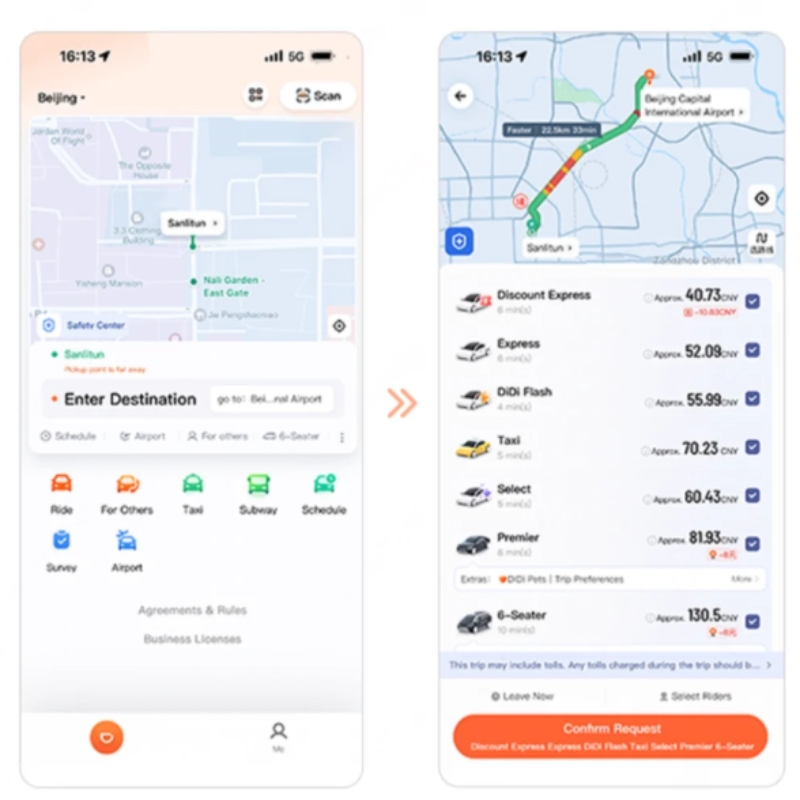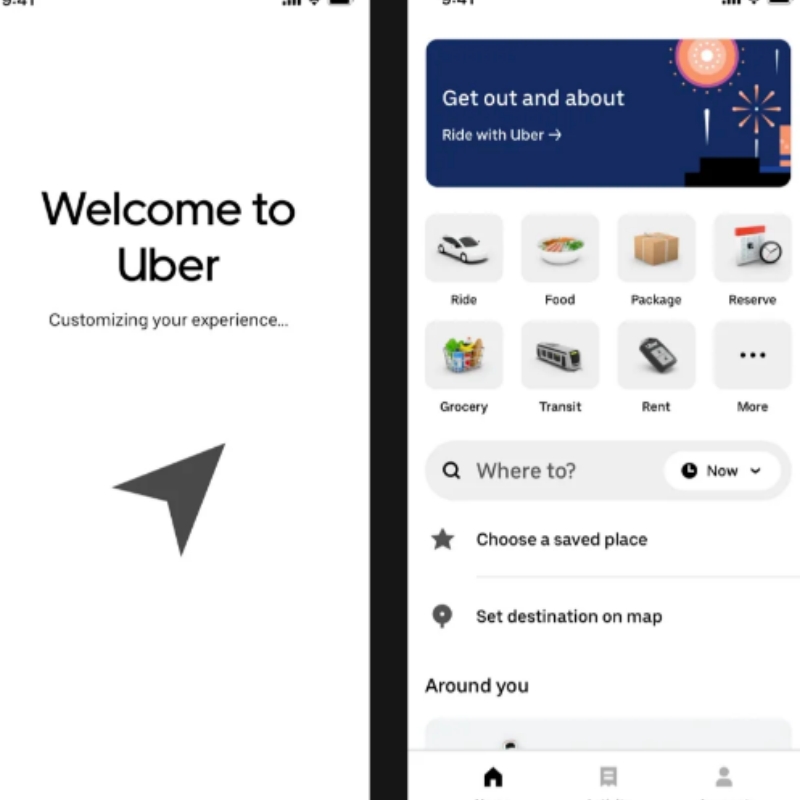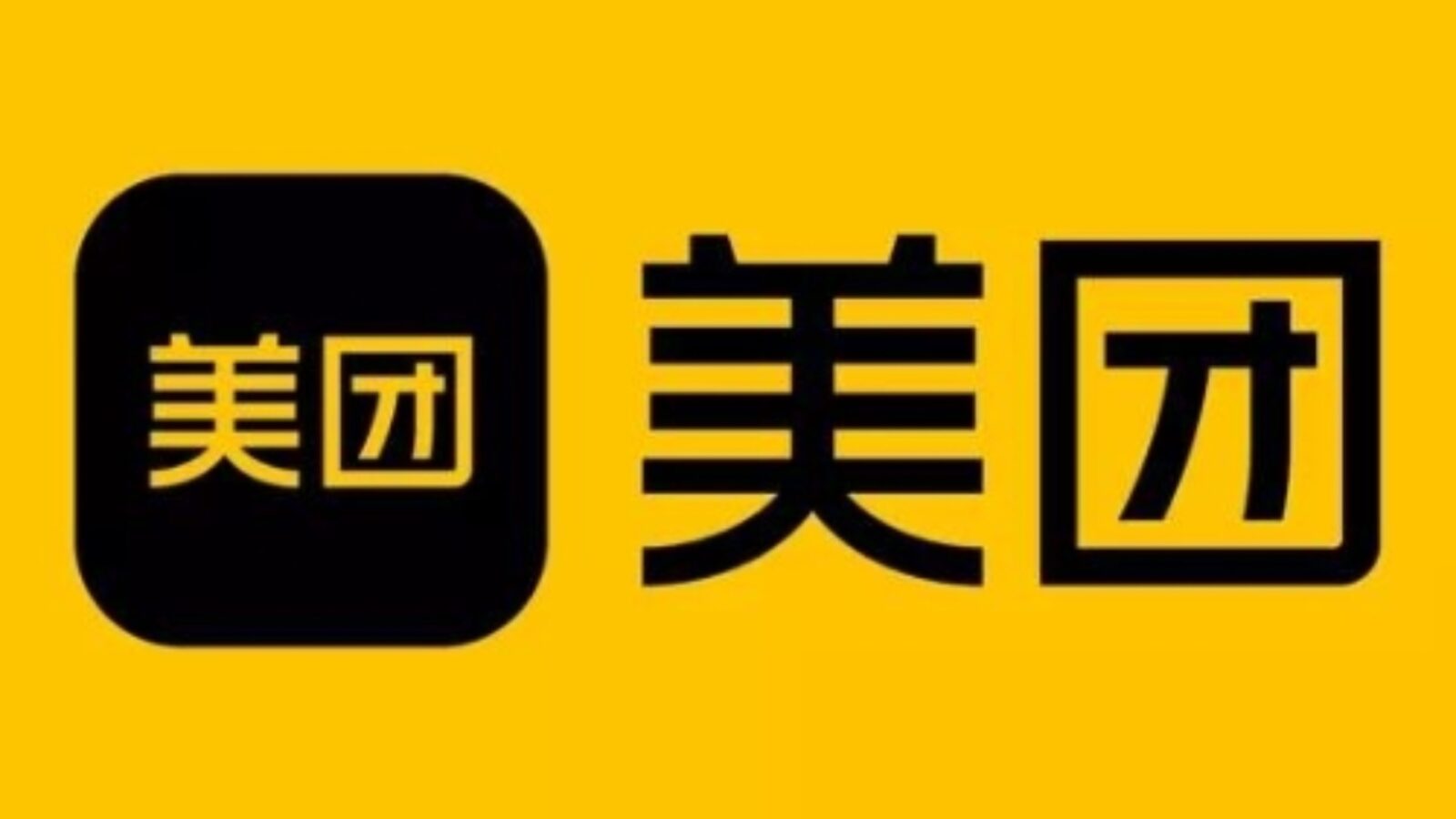Of all the life-saving apps that happen to work at lightning speed when you are traveling, ride-hailing can sometimes be the quickest. You may step out of an airport and reflexively tap Uber, because it operates almost everywhere from New York to Paris. But on mainland China, it’s a different story — this is Didi’s home turf. So here we go with the question you’re waiting for, didi vs uber which one is right for you? Where Uber’s strength is in global consistency and a familiar interface, Didi wins with all-in-one functions, local payment options and unbeatable coverage of Chinese cities. In this article, we’ll take a new angle and put the two apps to test from a travelers’ perspective to see which one really performs better, especially in China.
Apps: Global vs. Local
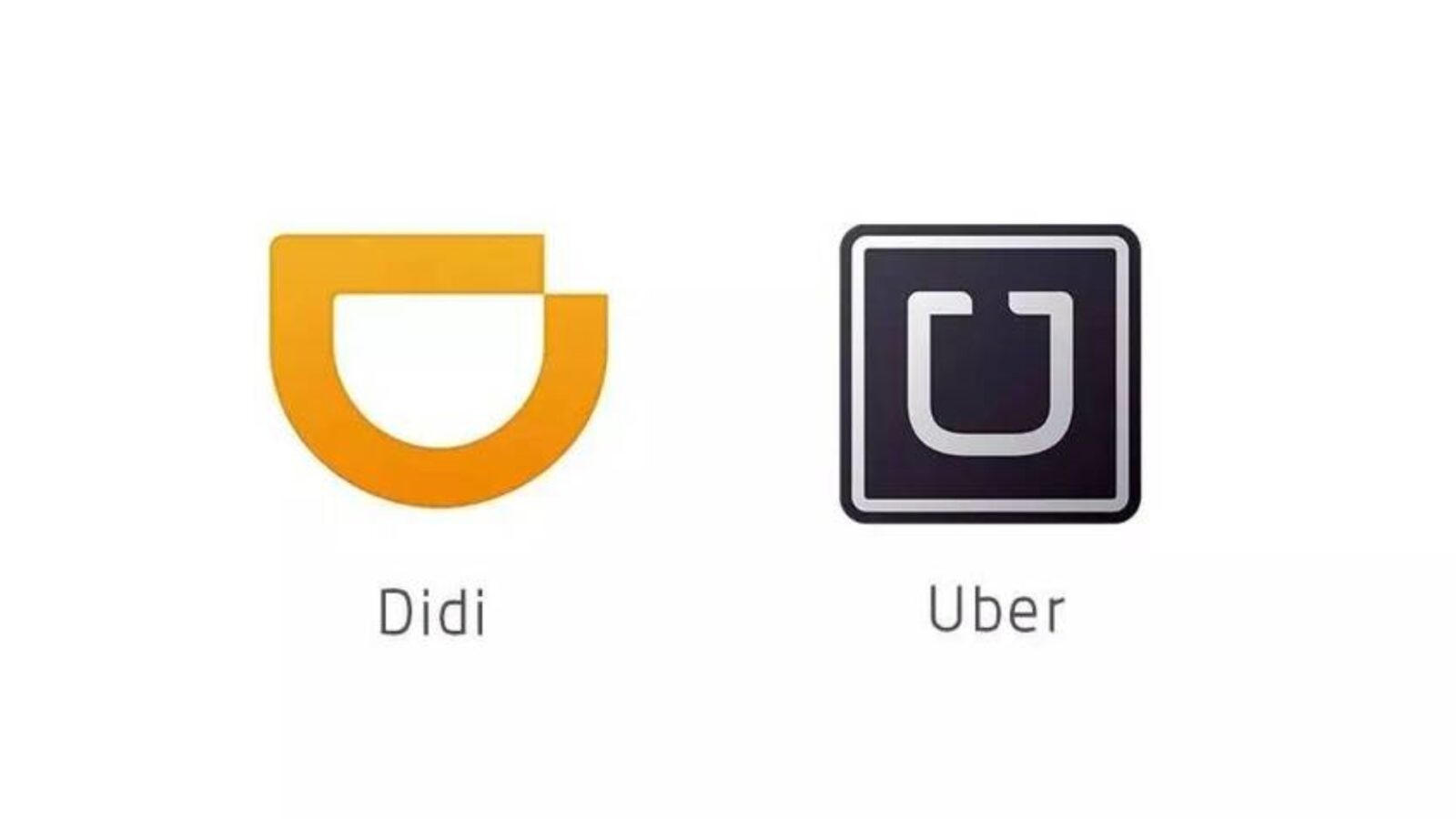
Didi Chuxing
Didi, the Chinese ride-hailing giant, is impressively large. Founded in 2012 by Cheng Wei, it first launched as Didi Dache “Didi Taxi,” but eventually became a super app that now provides more than just cars. To be more precise, it has budget-friendly Express cars, Pinche carpools, Premier and luxury offers, bike-sharing, e-bikes, freight, finance services, and even a food delivery service. Didi’s key advantage is a combination of deep localization and the dominance represented by almost no competitors. Whether you’re in Shanghai or a small town in Yunnan, I could always catch a ride there. Payments are secured by Alipay and WeChat Pay; one can use Visa and MasterCard in China as well. The English interface is significantly assists the first-timers. If you’re going to China, it’s not an issue of preference but of availability. The didi vs uber problem just doesn’t exist in China’s mainland.
Uber
The global pioneer of the ride-hailing industry is Uber. The American company was founded in 2009 by Travis Kalanick and Garrett Camp, and its brand has become synonymous with all app-based privatized transport. Uber is known for secure movements made by UberX, spatially by UberXL, stylish with Uber Black, eating with Uber Eats, and pure freight. Before moving, I’ve opened Uber in dozens of countries and saw a vehicle arrive within minutes. However, back in 2016, Uber completely left the mainland China after merging operations with Didi. Now it has no drivers in Beijing, Shanghai, or anywhere in the mainland. You can still catch Uber in Hong Kong, Macau, or Taiwan, where it functions normally. As a result, uber vs didi for China’s mainland could never be a question. The didi vs uber point is particularly relevant for Chinese mainland trips for you. Hence, getting ready with your Didi profile before the flight is critical.
- Didi Interface
- Uber Interface
App Interface and Ride Options
Didi’s interface reads like stepping into a mini lifestyle plaza. The home screen is covered in buttons for rides, bikes, food delivery, errands and even grocery shopping. For foreign travelers opening it the first time, this layout can seem overwhelming and slightly unorganized — you may need a few tries to get comfortable. But for the locals, this “clutter” is not clutter at all — it’s convenience: Everything you need in one place without switching apps. The design feels practical once you get used to it — though at first glance, it’s easy to feel lost in the mix.
Uber approaches it very differently. When you open the app, there is typically only one query: “Where to?” No extra icons, no distractions. It feels sparse and clean, which is reassuring, and it’s the same everywhere in the world, so regular Uber users don’t need to learn anything new. But remember: Uber doesn’t actually run cars in mainland China, anymore. You won’t be able to hail a car in Shanghai or Beijing; it operates only in Hong Kong and Taiwan. So the hardest thing is mastering Didi’s multifunctional interface.”
Beyond Cars: More Mobility and Daily Services
For rides, Didi has you covered in most departments: Express, Premier (luxury), Luxury and Hitch (carpooling), as well as regular taxi booking. It’s a site for everyone, and pursues avenues for just about every budget and need. Uber, meanwhile, maintains a slightly tighter grip on its categories: UberX, Uber Black, Uber Pool. It skews more to comfort, business-style travel. In short: Didi goes for “big and broad,” while Uber stays with “small and sharp.”
Beyond cars, both apps are diving into “last-mile” travel. In Chinese cities, Didi combines shared bikes and e-scooters, along with an option for finding charging stations for electric cars. Uber has also expanded its bike-and-scooter rentals around some Western cities through its Jump brand, though it’s not even close. While on the lifestyle side, Didi goes further — using it to run errands, go grocery shopping or get a package delivered, making it deeply integrated in daily life. Uber’s primary expansion has been its Uber Eats, which has become a destination for food delivery around the world. It isn’t as spread out as Didi, but when it comes to dining, it’s the better, more specialized option.
Payment and Ecosystem Integration
China’s embrace of fast digital payments plays especially well for Didi. And once you’ve added Alipay or WeChat Pay, rides pay out automatically without ever needing coins or bills. Recently, Didi also began accepting Visa and Mastercard, which took away one of the most significant barriers to travel. I could get out of the car and receipts would be generated automatically.
Worldwide, Uber does a great job with Apple Pay, Google Pay and multiple cards, but that strength is useless in China. Because there’s no Uber here, Didi is the hands-down winner, with ability to process both local wallets and foreign cards. Didi seemed to be built to conform to the reality of how China already lives and pays. From my experience, too, the didi vs uber payment moved has been a no-brainer for travelers.
Not sure which apps replace Uber for Shanghai rides? See Uber in Shanghai: Top Alternatives for Easy and Reliable Rides in China
Analyzing the Economics: Didi’s Pricing and Driver Relations
Dynamic Pricing
Both apps do surge pricing, only the Didi version follows China’s rhythms. Beijing rainstorms or Shanghai rush hours also frequently bumped up the multipliers to 2.0x.“The app always showed me what the surge was going to be before I made a booking, so I could decide if it was worth waiting or paying. Even during surge times, Didi usually came to less than haggling for a taxi from the airport.
Uber overseas does the same with surge, especially on Friday evenings or when it’s pouring. But now that Uber is gone from mainland China, only the surges of Didi matter. Checking the multiplier before agreeing to a ride saved me money multiple times. You don’t need to concern yourself about the didi vs uber pricing model except for travelers who are in China.
Driver Commission
Uber usually takes 20–25% of fares worldwide, and Didi has a sliding scale between 15% and 30%. These figures have a bearing on driver behavior. Some drivers in China clearly prefer to offer Didi Premier or other higher-end rides. They know incentives are stronger. As a passenger, I occasionally found budget rides more difficult to summon during rush hour.
It’s not as if travelers will be able to tell these commission details directly, but they do determine the supply of cars. This explained why some ride categories had seemed easier to come by than others.
Rewards and Incentives
The company offers reward programs that are based on ratings and bonuses to motivate drivers. What I frequently observed were drivers offering me bottled water, keeping their cars immaculate or being extra cautious behind the wheel. They are reaching for five stars because perks, like fuel discounts, are based on achieving that rating.
Uber operates worldwide quests, in which drivers are offered bonuses for completing specific numbers of rides. That system seems less connected to passenger comfort. In China, the emphasis on reputation created a feeling that drivers cared more about small details, which established trust. The big difference is in driver quality, and that's where the didi vs uber incentive structure plays out.
Ensuring Your Journey: Safety and Support

Didi's Live Agent
Safety Features
DIDI emphasizes safety after a number of high-profile incidents years ago. Today there are rides with live audio recording, facial identification for drivers, and AI trip monitoring. If it smelled smoke, if cars stopped too long, the system flashed us both. I found that level of supervision strict but comforting at night.
Uber’s strategy abroad leans more on user empowerment, including SOS buttons, trip-sharing and PIN checks. That feature does work elsewhere globally, but you won’t find it in mainland China. Instead, anticipate Didi’s surveillance-based system, something many travelers are shockingly fine with as bonus security. In terms of safety, there is a no brainer about the didi vs uber fight and clearly Didi wins in China.
Customer Support
Didi has Chinese language 24/7 hotlines and an AI chatbot. For non-chinese, there's English support but they're generally more sluggish to respond. Sometimes I used Google Translate to illustrate issues. And yet, things generally worked out with determination.
Uber overseas is more standardized, thanks to global systems and better English communication. But since Uber doesn’t exist in China, you simply have to get used to Didi’s support style. Lower your expectations to prevent disappointment.
Regulation and Compliance
Didi is closely overseen by the Chinese government, and shares some data with regulators. That integration makes the system heavily supervised but also stable. Some travelers consider this protective, while others regard it as invasive.
Overseas, Uber is tailored to individual countries and places greater emphasis on privacy as well as flexible compliance. The trade-off becomes clear: in a place like China, Didi feels official and heavily regulated. And for me it meant that rides always felt legal and legitimate, even if privacy felt flimsier.
Considering Other Options: Didi’s Carpooling Services
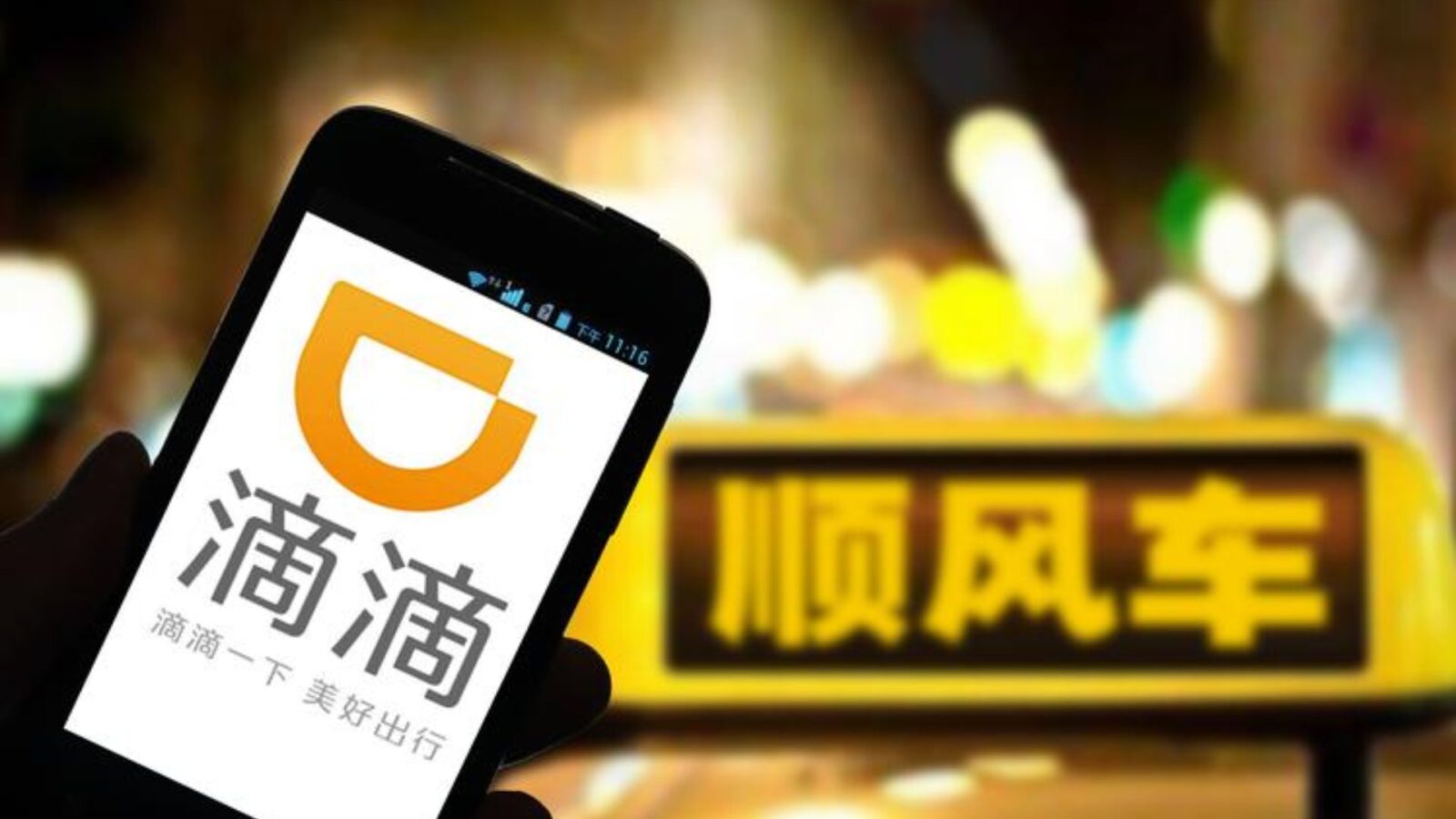
Didi’s Carpooling Service
Service Models
Sharing Didi Pinche (carpool) is still abundant in Chinese cities, particularly during rush hour. Fares are cheap by sharing a ride, often as little as ¥20 for a cross-town journey. It is a part of city life because students and workers depend on it every single day.
Uber Pool functioned in the same way overseas, but many cities retrenched after the pandemic. China’s Pinche Now China, on the other hand, cheaply thrives where it is demanded. I thought it was a fantastic way to get a taste of local commuting culture as a traveler. But when it comes to carpooling, there’s really only one bib daddy in the didi vs uber showdown in China.
User Experience
Pinche often pools with two or three passengers. The app neatly displayed everyone’s stops in advance, so there was less confusion. I liked looking at neighborhoods I would not otherwise see as we went on detours. The rides were slower, but they seemed real.
Uber Pool sometimes asks riders to walk a block or so to pickup locations, which enables greater efficiency but isn’t optimal with luggage. For Didi’s model, you get picked up right away. This seems easier; it also feels less direct. And such a trade-off underscores the tension between comfort and cost.
Challenges and Future
Didi battles to keep drivers happy with carpool detours while keeping passengers from becoming impatient. The company imposes rewards to mitigate these problems. During peak hours, I noticed that drivers sometimes were inclined to hesitate accepting Pinche requests.
Uber overseas grapples with different problems, largely decreasing demand for shared rides in the post-pandemic world. And in China, Pinche is still going great guns – courtesy of traffic jams and urban density. It’s practical for tourists, but it isn’t the best if you have heavy bags or find yourself sprinting toward trains.
Didi vs Uber Comparison Table
| Category | Didi (Mainland China) | Uber (Global/HK, Macau, Taiwan) |
|---|---|---|
| Availability | Available across all mainland Chinese cities | Not available in mainland; works in HK, Macau, Taiwan |
| App Interface | Feature-rich: rides, carpool, luxury cars, bikes, food delivery, errands | Simple: mainly rides; same clean UI worldwide |
| Payment Methods | Supports Alipay, WeChat Pay, Visa, MasterCard | Supports credit cards, Apple Pay, Google Pay |
| Service Types | Express, Premier, Luxury, Pinche (carpool), Taxi booking | UberX, UberXL, Uber Black, Uber Pool, Uber Eats |
| Extra Features | Bikes, e-scooters, errands, parcel delivery | Mainly expanded through Uber Eats (food delivery) |
| Safety Measures | Driver facial ID, trip audio recording, AI anomaly detection, SOS button | SOS button, trip sharing, PIN verification |
| Customer Support | Chinese + limited English; slower response | Standardized global support; stronger English assistance |
| Pricing Model | Dynamic pricing, often cheaper than airport taxis | Dynamic pricing, skewed toward comfort/business |
Summary: In mainland China, Didi is the only viable option — deeply integrated with local payments and daily life. Uber remains the global go-to but works only in Hong Kong, Macau, and Taiwan.
Planning Your Trip: How to Use Didi in China
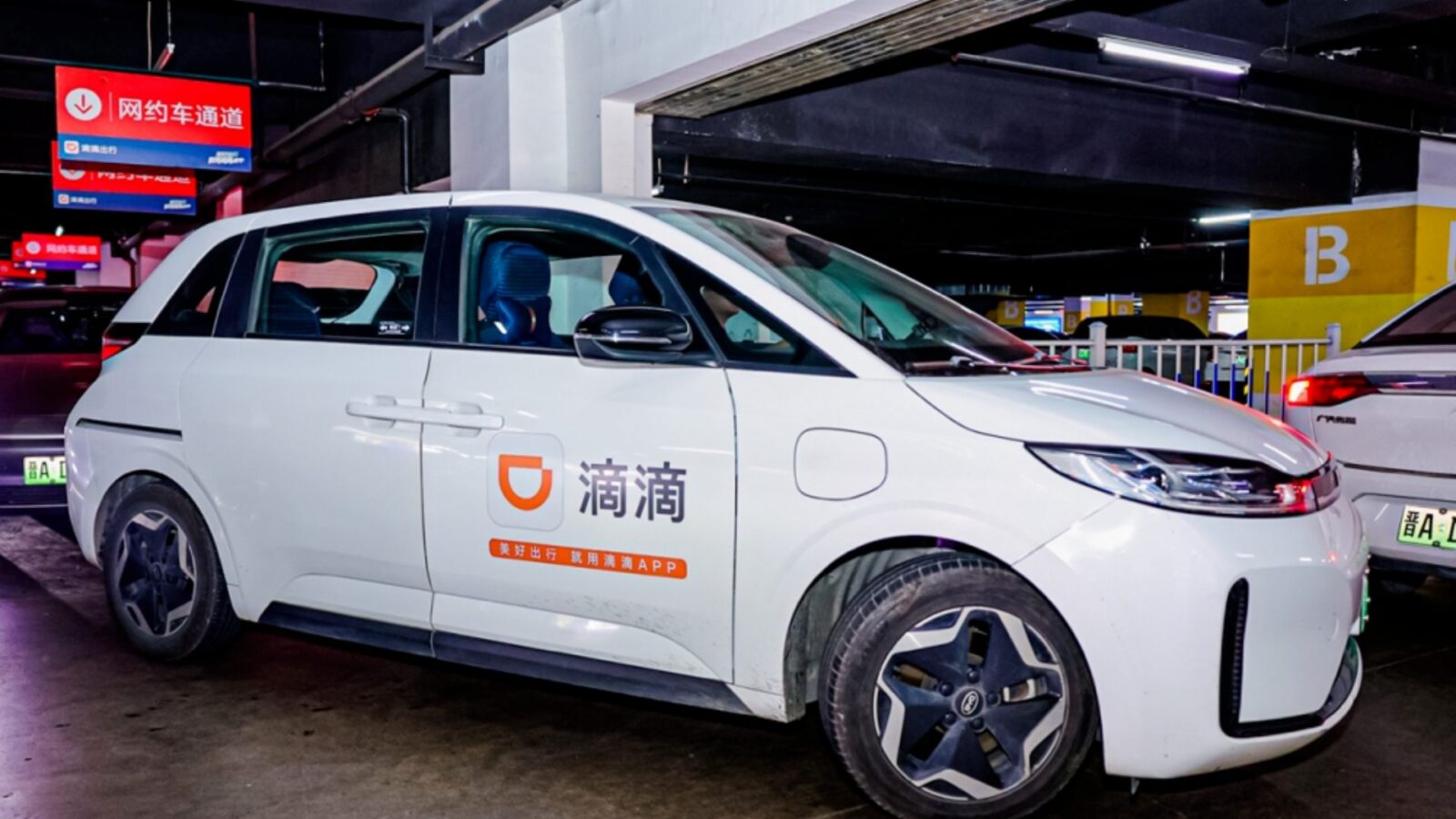
Didi Premier
Why Didi Works Better
For travelers in China, Didi is not merely a stand-in for Uber — it’s the only viable option. Coverage ranges everywhere from, suffice it to say, Beijing hutongs to Xi’an hotels to Chengdu suburbs. That reach saved me a few times when taxis were nowhere to be found. Payments are seamless, whether with a local wallet or card from overseas.
It also helps that you can apply your ride type more flexibly. Pinche is around ¥20; you might pay ¥200 on Premier for a luxury car. This versatility that makes Didi feel like the choice for both budget and business-class travelers. Only Didi, not Uber, still delivers that flexibility in China. My ultimate take on the didi vs uber debate is Didi always.
Example Ride in Shanghai (Step-by-Step)
- Start at the Bund
You’re standing along the Bund, with the Huangpu River skyline glowing in front of you. From here, you want to make your way to Nanjing Road Pedestrian Street, one of Shanghai’s busiest shopping zones. - Download and Register
Open the App Store or Google Play and download the Didi app before you set off. Register using your passport number and a working mobile number to unlock the ride options. - Enter Destination
In the search bar, type “Nanjing Road Pedestrian Street,” and the app will instantly suggest nearby matches. Selecting the correct spot ensures the driver heads straight to the pedestrian section. - Choose Ride Type
The app then shows several choices: Express for a quick and cheap ride, Premier for a nicer car, or Pinche if you want to carpool. Each option comes with an estimated fare and wait time so you know what to expect. - Confirm Booking
Once you choose, the app displays the driver’s name, plate number, and their estimated arrival. You can follow the little car on the map as it gets closer, just like in Uber. - Ride and Pay
After arriving at your stop, payment is automatically deducted from your linked card or wallet. For comparison, Ctrip lists a Bund–Nanjing Road taxi at ¥25–30, and Didi typically matches or beats that price.
Heard about Didi but not sure how foreigners can use it? Read Didi Ride-Hailing App in China: How to Easily Use It as a Foreigner (2025)
FAQs Section: Key Travel Information of Each App
Q: Can I still use Uber in China?
No, Uber left mainland China back in 2016 after merging its business with Didi. That means if you’re in Shanghai, Beijing, or Chengdu, the Uber app won’t show you any drivers. Instead, locals and tourists alike rely on Didi, which is fully licensed and deeply integrated with Chinese payment systems. The only places you can still use Uber under its own brand are Hong Kong, Macau, and Taiwan, where the service works similarly to other countries. If your trip includes both mainland cities and one of these regions, it’s best to keep both apps on your phone so you can switch depending on where you are.
Q: Can I register on Didi with a foreign passport?
Yes, most foreign travelers can register easily by selecting “passport” as the ID type during sign-up. You’ll need to enter your passport number and link it with a working mobile number, which could be a Chinese SIM or sometimes an overseas number with roaming. The tricky part can be receiving the SMS verification code — some overseas carriers block it, so it’s wise to test the app early, ideally before you really need a ride. Many tourists find it easier to buy a local SIM card on arrival, since that makes registration smoother and ensures reliable access to texts.
Q: Does Didi accept foreign payment methods?
Yes, Didi has expanded its payment options in recent years to accept Visa, MasterCard, and JCB credit or debit cards. That makes it possible to ride without setting up a full Alipay or WeChat Pay account, though linking those wallets usually gives you the smoothest experience. With an international card, fares are converted at the current exchange rate, and receipts appear inside the app. Keep in mind that not every city in China processes foreign cards equally well, so it’s smart to test your payment setup in a major hub like Shanghai or Beijing before relying on it in smaller towns.
Q: Is there an English version of the Didi app?
Yes, there is an English-language interface, and it covers all the main functions like booking, tracking, and paying for rides. However, some secondary menus — like coupons, promotions, or detailed settings — may still appear in Chinese. This usually isn’t a dealbreaker, since the core buttons are translated, but travelers often keep a translation app handy to double-check text. Google Translate’s instant camera feature can quickly decode tricky pop-ups. Once you’ve used Didi for a couple of rides, the layout becomes predictable enough that you may not even notice the occasional untranslated parts.
Q: Which is safer at night?
In mainland China, Uber isn’t an option, so Didi is the only app you’ll use. Safety has been a top focus for Didi, with built-in SOS buttons, route monitoring, and daily driver ID verification. If a car makes an unusual stop or detour, the system may automatically send an alert to both passenger and driver. Many foreign travelers report feeling secure using Didi late at night, especially since you can share your live trip details with friends. While no ride-hailing app is completely risk-free, the level of monitoring in China means that drivers know their routes and behavior are being tracked closely.
Q: What about airport pickups?
Most major Chinese airports now have designated Didi pickup zones, often clearly marked on signs in the arrivals hall. After you book a ride, the app will direct you to a specific zone, much like Uber does in other countries. For foreign travelers, this avoids the hassle of haggling with taxi drivers who sometimes overcharge at airports. In busy hubs like Beijing Capital or Shanghai Pudong, Didi cars are plentiful, though during peak times you may wait a little longer. Since Uber isn’t available in mainland airports, your only real choices are Didi or traditional taxis.
Q: Can I use Apple Pay or PayPal on Didi?
Apple Pay can work in some cases, but only if it’s linked to a supported credit card like Visa or MasterCard inside the Didi app. That means Apple Pay isn’t a direct option on its own — it’s more of a bridge to your card. PayPal, on the other hand, is not supported at all on Didi in China. If you prefer mobile wallets, your best bet is to set up Alipay or WeChat Pay, which both integrate smoothly with Didi and make payments automatic. For travelers who want to keep things simple, just linking an international card directly to Didi usually does the trick.
